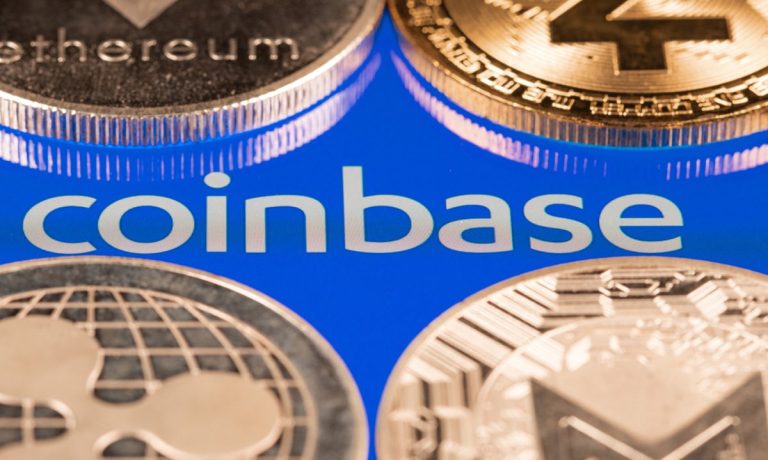
Coinbase is bleeding customers so quickly that it has collapsed out of the top 10 global cryptocurrency exchanges, dropping from fourth to 14th in just eight months.
While many retail buyers, who make up 95% of Coinbase’s customer base, have fled crypto since the price of bitcoin collapsed 70% beginning in November, it does not explain the depth of Coinbase’s customer losses: it dropped from as much as 9% of global trading volume when crypto prices peaked that month, to just 2.9% at present, Mizuho analysts said in a July 13 research note.
Mizuho analyst Dan Dolev warned that the crypto industry’s first Nasdaq-listed company is “suffering from a perfect storm of more competition in a declining market while take rates are perceived to be too high and unsustainable,” Bloomberg said.
In late June, Goldman Sachs hit Coinbase with a downgrade, rating it a “sell” and predicting “further degradation” of revenue will force steeper cost-cutting than the 18% layoffs it announced on June 14. Its share price is down 84%.
Read more: Goldman Deals Down-and-Out Crypto Another Blow, Dropping Coinbase to ‘Sell’
In May, Sam Bankman-Fried’s FTX exchange edged Coinbase out of its longtime spot as the No. 1 U.S. exchange by volume.
So what happened to Brian Armstrong’s high-flying exchange whose stock price has been used as a proxy for the broader cryptocurrency industry’s health?
Too Little
It’s too easy to blame Coinbase’s tumble on the broader crypto market’s price collapse and growing recession fears, which have combined to drive both institutional and retail clients out of riskier investments, including cryptocurrency.
For one thing, investor numbers were climbing substantially as recently as April, when PYMNTS’ 2022 U.S. Crypto Consumer study found that the number of Americans who had held crypto sometime in the past 12 months had grown from 41.5 million to 59.6 million.
One major difference is that it is a lot weaker than competitors when it comes to large institutional buyers who bring in far more revenue. Coinbase’s first-quarter earnings report showed these made up just 5% of its customer base.
Other newer competitors like Sam Bankman-Fried’s FTX exchange — which edged Coinbase out of its longtime spot as the No. 1 U.S. exchange by volume in May — have a far higher ratio. FTX’s average trade size in May was $2,000, roughly twice that of Coinbase, crypto market data firm Kaiko reported.
See more: Coinbase Tightens Head Count as Crypto Business Braces for More Fallout
Then there’s derivatives trading. On July 15, FTX’s 24-hour derivatives volume was about $7 billion, compared to its spot volume of about $2 billion — about $100 million more than Coinbase. The Coinbase Derivatives Exchange launched less than a month ago and its first product, retail-focused bitcoin nano futures (1% of a bitcoin) has seen little interest.
Coinbase’s new and much ballyhooed NFT marketplace has seen little interest either.
Too Much
Then there’s the matter of fees. Coinbase may be the best-known cryptocurrency exchange and have a user-friendly front end for new retail buyers, but it charges far more than FTX and other top U.S. exchanges. Coinbase charges about 1.5% for trades above $205 and $0.99 to $2.99 for trades below that level. FTX charges a straight 0.02% maker and 0.07% taker fee, while Coinbase charges makers 0.4% and takers 0.6% below $10,000.
The top global exchange, Binance, doesn’t serve the U.S. The relatively new Binance.US, which shares ownership, is far smaller but made a grab for retail customers recently, cutting its fee for many bitcoin trades to zero.
See more: Binance CEO, Lightning Rod for Controversy, Launches Bitcoin Price War
Coinbase has other problems among more experienced traders: It has a reputation for crashing during extremely active trading, which has been a problem for years.
Then there is the publicity cost of its public listing. For one thing, its volume, customer and profit numbers must be disclosed, while competitors’ are private. So when Coinbase’s revealed a $430 million net loss in Q1 versus an $840 million profit in the previous quarter, with trading volume down 44%, everybody knew it.
Read more: Coinbase May Be Unfazed By 80% Drop, but Investors Are Clearly Shaken
And, in May, it had to warn customers that in the event of a bankruptcy they would be unsecured creditors possibly facing losses on a 10-Q filing. While Armstrong said over and over that insolvency was nowhere in sight — it has $6 billion in cash — it still had to say the word “bankruptcy.” And that drew headlines.